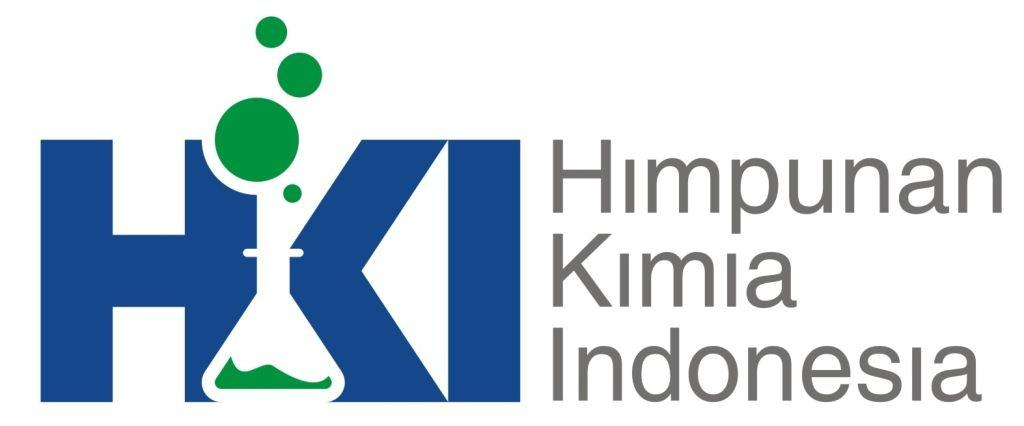Two Sesquiterpenes from n-Hexane Fraction of Curcuma soloensis Rhizomes and Their Antimicrobial Activities
Abstract
Curcuma soloensis is one of the medicinal plants that has the potential to be a source of bioactive compounds. The antimicrobial study of the bioactive compounds from C. soloensis was still limited. This study aimed to isolate the bioactive compounds from C. soloensis rhizomes and to evaluate their potential as antimicrobial agents. C. soloensis rhizome extraction was done using the maceration method with acetone and then fractionated with n-hexane: methanol (1:1). The compounds were separated and purified using vacuum liquid chromatography and radial chromatography. The structure of the isolated compounds was determined using the nuclear magnetic resonance (1H and 13C NMR) spectroscopy analysis and comparison with literature data. Antimicrobial activity assays of the extract, n-hexane fraction, and isolated compounds were carried out by microdilution methods against Escherichia coli, Staphylococcus aureus, Candida albicans, and Malaszezia furfur. Two bioactive compounds from the n-hexane extract of C. soloensis rhizome have been isolated: ar-curcumene and ar-turmerone. Antimicrobial test results on acetone extract, n-hexane fraction, and isolated compounds showed that ar-turmerone had the highest activity against S. aureus with a MIC value of 15.6 μg / mL. In comparison, ar-curcumene showed the same activity against all test microbes with a MIC value of 62.5 μg / mL. This study showed that secondary metabolite compounds of C. soloensis rhizomes have the potential to be developed as antimicrobial agents.
Keywords
References
Keita K, Darkoh C, Okafor F. Secondary plant metabolites as potent drug candidates against antimicrobial-resistant pathogens. SN Appl Sci. 2022;4(8). doi:10.1007/s42452-022-05084-y
Elmaidomy AH, Shady NH, Abdeljawad KM, et al. Antimicrobial potentials of natural products against multidrug resistance pathogens: a comprehensive review. RSC Adv. 2022;12(45):29078-29102. doi:10.1039/d2ra04884a
Subositi D, Wahyono S. Study of the genus Curcuma in Indonesia used as traditional herbal medicines. Biodiversitas. 2019;20(5):1356-1361. doi:10.13057/biodiv/d200527
Dosoky NS, Setzer WN. Chemical composition and biological activities of essential oils of Curcuma species. Nutrients. 2018;10(9):10-17. doi:10.3390/nu10091196
Rahaman MM, Rakib A, Mitra S, et al. The genus Curcuma and inflammation: Overview of the pharmacological perspectives. Plants. 2021;10(1):1-19. doi:10.3390/plants10010063
Hong SL, Lee GS, Syed Abdul Rahman SN, et al. Essential oil content of the rhizome of Curcuma purpurascens Bl. (Temu Tis) and its antiproliferative effect on selected human carcinoma cell lines. Sci World J. 2014;2014. doi:10.1155/2014/397430
Rouhollahi E, Zorofchian Moghadamtousi S, Hamdi OAA, et al. Evaluation of acute toxicity and gastroprotective activity of Curcuma purpurascens BI. rhizome against ethanol-induced gastric mucosal injury in rats. BMC Complement Altern Med. 2014;14(1):1-10. doi:10.1186/1472-6882-14-378
Rouhollahi E, Moghadamtousi SZ, Al-Henhena N, et al. The chemopreventive potential of Curcuma purpurascens rhizome in reducing azoxymethane-induced aberrant crypt foci in rats. Drug Des Devel Ther. 2015;9:3911-3922. doi:10.2147/DDDT.S84560
Rouhollahi E, Zorofchian Moghadamtousi S, Paydar M, et al. Inhibitory effect of Curcuma purpurascens BI. rhizome on HT-29 colon cancer cells through mitochondrial-dependent apoptosis pathway. BMC Complement Altern Med. 2015;15(1):1-12. doi:10.1186/s12906-015-0534-6
Diastuti H, Asnani A, Chasani M. Antifungal activity of Curcuma xanthorrhiza and Curcuma soloensis extracts and fractions. IOP Conf Ser Mater Sci Eng. 2019;509(1):9-14. doi:10.1088/1757-899X/509/1/012047
Murningsih T, Rezeki S, Chairul H, Priyono S. The chemical composition and anti-bacteria activity analysis of essential oil of “Temu glenyeh” (Curcuma soloensis Val. War AKAB Indones. 2000;12:37-45.
Okta OP, Laili RTN. Antimicrobial activity of temu blenyeh (Curcuma purpurascens Blume) ethanol extract against on Streptococcus mutants and Candida albicans. Ad-Dawaa’ J Pharm Sci. 2023;6(1):93-101. doi:10.24252/djps.v6i1.37703
Vitasari RA, Wibowo FR, Marliyana SD, Wartono MW. Isolation and identification of curcumin and bisacurone from rhizome extract of temu glenyeh (Curcuma soloensis. Val). IOP Conf Ser Mater Sci Eng. 2016;107(1). doi:10.1088/1757-899X/107/1/012063
Marliyana SD, Wartono MW, Wibowo FR, Munasah G. Isolasi dan Identifikasi Senyawa Seskuiterpen dari Curcuma soloensis Val. (Temu Glenyeh). J Kim Val. 2018;4(2):137-142. doi:10.15408/jkv.v4i2.7443
Ragasa CY, Rideout JA, Avenue T, Sciences B. Sesquiterpenoids and diarylheptanoids from Curcuma domestica. 2005;18:21-24.
Diastuti H, Syah YM, Juliawaty LD, Singgih M. Antibacterial Curcuma xanthorrhiza extract and fractions. J Math Fundam Sci. 2014;46(3):224-234. doi:10.5614/j.math.fund.sci.2014.46.3.2
Du ZT, Zheng S, Chen G, Lv D. A short synthesis of bisabolane sesquiterpenes. Molecules. 2011;16(9):8053-8061. doi:10.3390/molecules16098053
Bergman ME, Davis B, Phillips MA. Occurrence, and mechanism of action. Molecules. Published online 2019:3961.
Saleem M, Nazir M, Ali MS, et al. Antimicrobial natural products: An update on future antibiotic drug candidates. Nat Prod Rep. 2010;27(2):238-254. doi:10.1039/b916096e
Abreu AC, McBain AJ, Simões M. Plants as sources of new antimicrobials and resistance-modifying agents. Nat Prod Rep. 2012;29(9):1007-1021. doi:10.1039/c2np20035j
Marliyana SD, Wibowo FR, Wartono MW, Munasah G. Evaluation of antibacterial activity of sesquiterpene ar-turmerone from Curcuma soloensis Val. rhizomes. IOP Conf Ser Mater Sci Eng. 2019;578(1):0-3. doi:10.1088/1757-899X/578/1/012060
Narjara Santos da Silva G, Pozzatti P, Rigatti F, et al. Antimicrobial evaluation of sesquiterpene ar-curcumene and its synergism with imipenem. J Microbiol Biotechnol food Sci. 2015;4(5):434-436. doi:10.15414/jmbfs.2015.4.5.434-436
Lobiuc A, Pavăl NE, Mangalagiu II, et al. Future Antimicrobials: Natural and functionalized phenolics. Molecules. 2023;28(3). doi:10.3390/molecules28031114
Huang W, Wang Y, Tian W, et al. Biosynthesis investigations of terpenoid, alkaloid, and flavonoid antimicrobial agents derived from medicinal plants. Antibiotics. 2022;11(10). doi:10.3390/antibiotics11101380
DOI: 10.15408/jkv.v10i1.36613
Refbacks
- There are currently no refbacks.
Copyright (c) 2024 Hartiwi Diastuti, Ari Asnani, Puji Lestari, Teni Astuti, Naela Nurmalia, Ade Sholeh Hidayat

This work is licensed under a Creative Commons Attribution-ShareAlike 4.0 International License.


